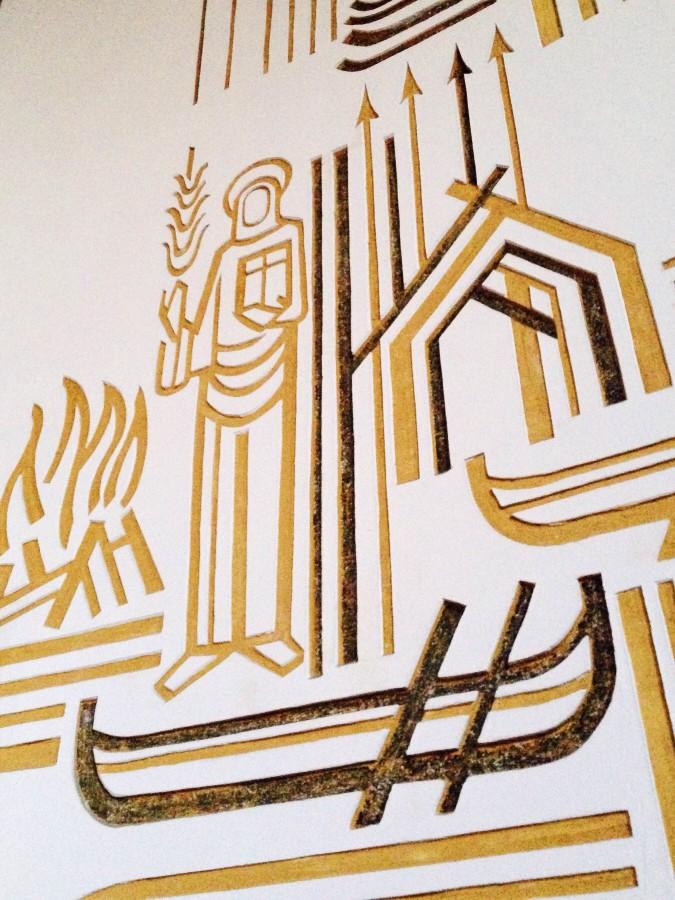St Jean de Brebeuf: a True Story of Thanksgiving
November 24, 2015
At a young age, most Americans are told the tale of the Pilgrims encountering Squanto and the Native Americans, and how the Natives taught the Pilgrims to survive in the New World. While the story ends with a giant feast and the moral to be thankful for what you have, historians regard the entire story as a lie. In reality, the Native Americans were either fully converted into European culture as subjects, made to work in slave labor, forced from their lands, or were simply massacred.
The story of Jean de Brebeuf provides a real world example the cultural exchange between Native and European settlers. The story involves Brebeuf traveling to what is now Canada, where he encountered the Huron tribe. Brebeuf lived amongst the Huron for many years, embracing their culture and creating an environment of peace, respect, and mutual harmony. The peace lasted until the Iroquois tribe attacked the Hurons and killed everyone, tortured Brebeuf and ate his heart to “gain his strength and courage,” according to Brebeuf history teacher and Jesuit Matthew Spotts
While Jean de Brebeuf’s story has a brutal and grim ending, it does have parallels to the traditional story of Thanksgiving. Both stories involve teaching, coexistence, and kinship of Europeans and Native Americans. The Hurons and Squanto’s tribe both learned theology and European culture, while Jean de Brebeuf and the Pilgrims learned about Native American culture, traditions, and how to survive in their new environments.
It’s the differences between the stories, however, which are the most important take-aways. Spotts points out that “Jean de Brebeuf was part of the Jesuit order and thus was Catholic, and he believed in conversion of foreign people, but with the native culture remaining intact.” He went to point out that “In contradiction, the Pilgrims were Calvinist and their ideas of conversion required a societal, cultural and theological change” of the native population. “Since the foundation of the Christian Church, conversions were frequent practice, whether through force or choice. The converters were at the mercy of whomever got to them first and attempted to convert them.”
The problem of comparing the traditional Thanksgiving story is its inaccuracy. Spotts calls the Thanksgiving story” wildly and stupendously historically inaccurate.” But he added that “Both stories are about Europeans interacting with Native groups peacefully.” Spotts went on to question the motives for the real historical story of Thanksgiving and whether the traditional story was legitimate, “The story has been mythologized enough that it is hard to get the actual story of what happened. Was it a resource exploitation, trade, or some sort of meal where they sat down together? It is hard to tell what exactly happened because the sources aren’t clear.”
The real and imagined Thanksgiving stories might have had drastically different outcomes, but their differences and similarities to the story of Jean de Brebeuf do provide valuable lessons to Brebeuf Jesuit students. As Jean De Brebeuf himself might urge, embrace other cultures with open arms. Be respectful of people with contradicting views. Write your own history responsibly. And most importantly, be thankful of what you have and know the importance of communication and kinship.





